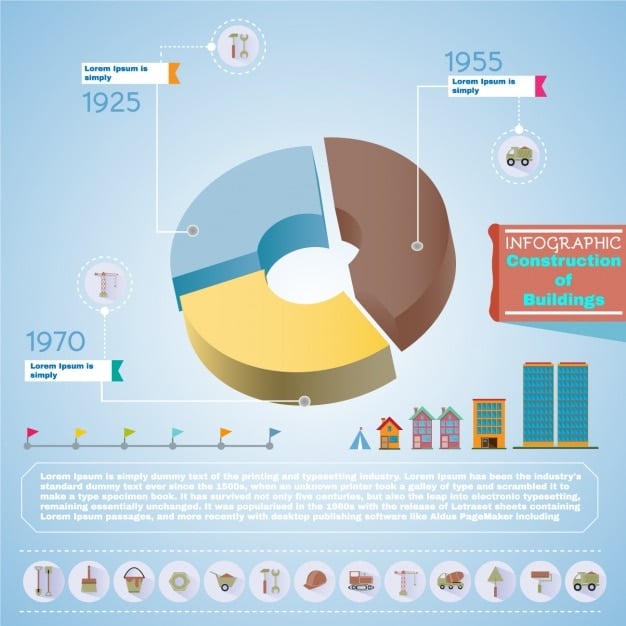Key Performance Indicators (KPIs) for UN Relief Programs in the US

Key Performance Indicators (KPIs) for UN-led relief programs in the US are measurable values that demonstrate the effectiveness of these programs in addressing humanitarian needs, ensuring accountability, and achieving strategic goals.
Understanding Key Performance Indicators (KPIs) for UN-led relief programs in the US is crucial for evaluating their impact and ensuring resources are used effectively to address critical needs.
What are the Key Performance Indicators for UN Relief Programs in the US?
When evaluating the efficacy of UN relief programs within the United States, it’s essential to understand the specific metrics used to measure their impact. These Key Performance Indicators (KPIs) provide a framework for assessing various aspects of the programs, from their reach and efficiency to their overall contribution to addressing humanitarian needs.
The KPIs should not only measure outputs but also reflect the broader goals of the UN’s involvement, such as promoting sustainable development, ensuring human rights, and building resilience in affected communities. By focusing on both quantitative and qualitative data, stakeholders can gain a comprehensive understanding of the program’s strengths and areas for improvement.

Measuring Reach and Access
One of the primary goals of any relief program is to reach as many people in need as possible. Therefore, KPIs related to reach and access are critical. These metrics help to determine how effectively the program is penetrating affected communities and delivering essential services to vulnerable populations.
Equally important is ensuring that the aid reaches those who need it most, without discrimination or exclusion. Effective targeting is essential to ensure that the most vulnerable segments of the population, such as women, children, the elderly, and people with disabilities, receive the assistance they require.
- Number of beneficiaries reached: Tracks the total number of individuals who have received assistance through the program.
- Geographic coverage: Assesses the extent to which the program is reaching different regions or areas within the US.
- Time to delivery: Measures the speed and efficiency of delivering aid and services to affected populations.
In conclusion, by analyzing these specific KPIs, stakeholders can gain a clearer understanding of the extent to which UN relief programs are effectively reaching and serving the populations in need within the US.
Assessing the Efficiency of Resource Utilization
Effectively managing and utilizing resources is paramount for UN relief programs to maximize their impact and ensure accountability. KPIs focused on resource utilization provide valuable insights into how efficiently resources are being allocated and managed throughout the program cycle.
These indicators should not only measure financial inputs but also consider the effective utilization of human resources, materials, and logistical support. By analyzing these metrics, organizations can identify inefficiencies, optimize resource allocation, and enhance the overall cost-effectiveness of their programs.
Cost-Effectiveness
Evaluating the cost-effectiveness of various program activities is essential to ensure that resources are being utilized efficiently and providing maximum value to beneficiaries. A strong focus on cost-effectiveness can help programs make informed decisions about resource allocation and program design.
- Cost per beneficiary: Calculates the average cost of providing assistance to one individual, reflecting the program’s efficiency in delivering services.
- Administrative overhead ratio: Measures the proportion of total expenditure allocated to administrative costs versus program activities, indicating the program’s focus on direct assistance.
- Fundraising efficiency: Assesses the cost of raising funds in relation to the amount of funds raised.

In summary, by closely monitoring these KPIs related to resource utilization, UN relief programs can ensure that they are operating effectively and efficiently, maximizing the impact of their interventions in the US.
Evaluating the Impact on Affected Communities
Beyond immediate relief, UN programs aim to have a lasting, transformative effect on the communities they serve. Evaluating the impact on affected communities requires a nuanced approach, considering both short-term and long-term outcomes. These KPIs focus on the improvements in living conditions, resilience, and overall well-being resulting from the interventions.
These broader goals often encompass promoting sustainable development, empowering local communities, and fostering social cohesion. KPIs should capture both quantitative and qualitative data, providing a comprehensive picture of the positive changes achieved through the program.
Measuring Community Resilience
Building community resilience is crucial for ensuring that affected communities can better withstand future shocks and stresses. Indicators of resilience may include improvements in infrastructure, enhanced access to resources, and increased capacity to cope with disasters.
- Improved living conditions: Assesses the improvement in housing, sanitation, and access to basic amenities as a result of the program.
- Enhanced access to healthcare: Measures the increase in access to healthcare services, including immunization, maternal care, and treatment for communicable diseases.
- Increased food security: Tracks the improvement in access to sufficient, safe, and nutritious food for affected populations.
To conclude, by analyzing these impact-related KPIs, stakeholders can gain a deeper understanding of the long-term transformative effects of UN relief programs in the US.
Ensuring Accountability and Transparency
Accountability and transparency are fundamental principles for UN operations worldwide, including relief programs in the US. Demonstrating a commitment to ethical conduct and responsible stewardship of resources builds trust and confidence among stakeholders, including donors, beneficiaries, and the wider public.
Transparently communicating program activities, outcomes, and challenges is also essential for fostering collaboration and learning. Regular reporting, accessible information channels, and open dialogue with stakeholders promote accountability and continuous improvement.
Feedback Mechanisms
Establishing robust feedback mechanisms is essential for ensuring that programs are responsive to the needs and preferences of affected communities. These mechanisms allow beneficiaries to voice their concerns, provide suggestions, and participate in program decision-making.
- Percentage of grievances addressed: Measures the proportion of complaints or grievances received that are resolved in a timely and satisfactory manner.
- Stakeholder satisfaction rate: Assesses the level of satisfaction among beneficiaries, local authorities, and other stakeholders with the program’s performance.
In summary, these indicators related to accountability and transparency help ensure that UN relief programs operate responsibly and ethically in the US.
Promoting Coordination and Collaboration
Effective coordination and collaboration among various actors are essential for optimizing the impact of UN relief programs. These partnerships may include government agencies, non-governmental organizations (NGOs), community-based organizations (CBOs), and the private sector.
By working together, these diverse stakeholders can leverage their respective strengths, avoid duplication of efforts, and ensure a more holistic and coordinated response to humanitarian needs. Coordination mechanisms should facilitate information sharing, joint planning, and collaborative implementation.
Partnership Effectiveness
Measuring the effectiveness of partnerships involves evaluating the extent to which collaborative efforts contribute to achieving program objectives. This may include assessing the efficiency of joint activities, the quality of relationships among partners, and the overall impact of the collaborative effort.
- Number of active partnerships: Tracks the number of partnerships established with other organizations or agencies to support program implementation.
- Joint activity completion rate: Measures the proportion of planned joint activities that are successfully completed, indicating the effectiveness of collaboration.
To conclude, KPIs focused on coordination and collaboration help ensure that UN relief programs are effectively integrated into the broader humanitarian response system in the US.
Adaptability and Innovation in Relief Efforts
In a rapidly changing world, UN relief programs must demonstrate adaptability and innovation to effectively address evolving challenges. The ability to learn from experience, embrace new technologies, and adapt strategies to changing circumstances is critical for maximizing impact and relevance.
Innovation may involve adopting new approaches to service delivery, utilizing data analytics to inform decision-making, or leveraging technology to improve communication and coordination. A culture of innovation encourages experimentation, risk-taking, and continuous improvement.
Technology Adoption
Measuring the adoption and impact of new technologies can provide valuable insights into the innovative capacity of relief programs. This may include assessing the utilization of mobile technology for data collection, the use of geographic information systems (GIS) for mapping and analysis, or the implementation of digital platforms for communication and coordination.
- Adoption rate of new technologies: Measures the extent to which new technologies are being integrated into program activities and processes.
- Impact of technology on efficiency: Assesses the extent to which the use of technology contributes to improved efficiency, cost-effectiveness, or reach.
Basically, KPIs related to adaptability and innovation help ensure that UN relief programs remain relevant and effective in the face of evolving challenges in the US.
| Key Metric | Brief Description |
|---|---|
| 🎯 Beneficiary Reach | Total individuals assisted by the UN program. |
| 💸 Cost Efficiency | The average cost incurred per beneficiary. |
| 🤝 Partnership Rate | Number of active partnerships with other organizations. |
| 📊 Grievances Addressed | Percentage of complaints resolved satisfactorily. |
Frequently Asked Questions (FAQs)
▼
A KPI is a measurable value that demonstrates how effectively a UN relief program is achieving key objectives. It helps assess performance, identify areas for improvement, and ensure accountability.
▼
KPIs provide evidence-based insights into program effectiveness, resource utilization, and impact on affected communities. They help ensure transparency, accountability, and continuous improvement.
▼
By tracking KPIs, program managers can identify areas where performance is lagging and implement targeted interventions to improve outcomes, enhance efficiency, and maximize impact.
▼
KPIs are used by program managers, donors, government agencies, and other stakeholders to assess the effectiveness of UN relief programs and make informed decisions about resource allocation and program design.
▼
Information about KPIs used in specific UN relief programs can typically be found in program documentation, evaluation reports, and on the websites of relevant UN agencies and partner organizations.
Conclusion
In conclusion, understanding and effectively utilizing Key Performance Indicators is crucial for ensuring the success and accountability of UN-led relief programs in the US. By focusing on these metrics, we can improve the lives of those affected by disasters and promote a more resilient society.





